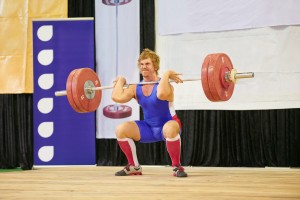Posted on February 08, 2016 by Jenny Cromack
 Squats are a critical component of pretty much everyone’s training program, we can use them to develop lower body strength, power, rate of force development, as well as a host of other elements. However squats are most effective when completed efficiently and to a technical model. Once you have gained the flexibility and mobility required to complete the full back squat, the exercise itself will, for the most part, maintain lower body mobility as well as enhance variables of fitness… providing you complete it regularly. So if you are looking to develop your squat here is a technical model for the perfect squat. Print it out practice it and develop your squat pattern mechanics.
Squats are a critical component of pretty much everyone’s training program, we can use them to develop lower body strength, power, rate of force development, as well as a host of other elements. However squats are most effective when completed efficiently and to a technical model. Once you have gained the flexibility and mobility required to complete the full back squat, the exercise itself will, for the most part, maintain lower body mobility as well as enhance variables of fitness… providing you complete it regularly. So if you are looking to develop your squat here is a technical model for the perfect squat. Print it out practice it and develop your squat pattern mechanics.
Preparing For The Lift
- Place bar in the squat rack slightly below shoulder height
- Step under the bar (don’t lift the bar out)
- The bar should be positioned on the edge of the scapula
- Hands should be evenly placed
- Feet should be positioned under the barbell
- Engage the rhomboids and elevate the chest
- Stand straight and step a short distance backwards
The Decent of the Squat (Lowering Phase)
- Before beginning the decent take a deep breath and hold until final stages of the lift
- You should begin the movement by flexing the hips and knees at the same time
- Maintain an upright trunk angle throughout the lift, you should be able to maintain a neutral spine throughout the movement
- Knees should move in line with the toes, toes can be turned out slightly.
- As you descend in the squat you should distribute the weight to the rear of the foot
The Bottom Position
- The downward movement of the squat finishes when the centre of the hip joint passes the top of the knee
- The femur will pass blow parallel with the floor
- Pressure on the knee is reduced once the hips have been lowered below parallel
- The feet should remain flat on the floor throughout the lift, no rotation or heel lift
The Accent (Lifting Phase)
- Drive explosively into the floor, extending at the hips and knee at the same time
- Maintain upright torso angle leading the movement with the chest
- Finish the movement in a fully extended position and breath out, prepare for the next repetition
By focusing and following each individual point above you can achieve the perfect squat which is safe and effective and will reap maximum benefits to your training.

